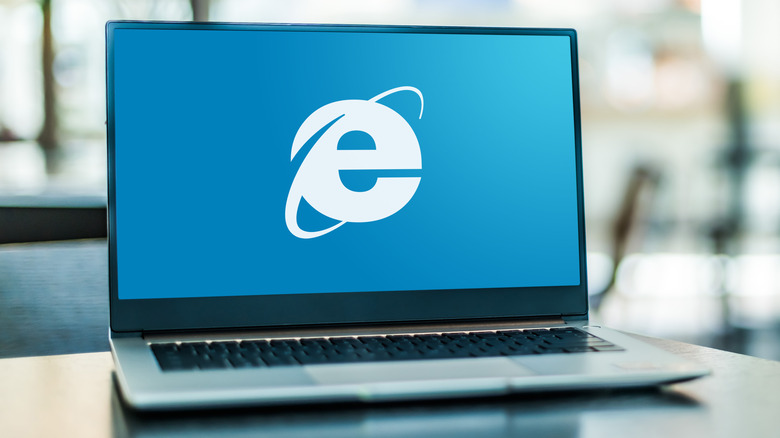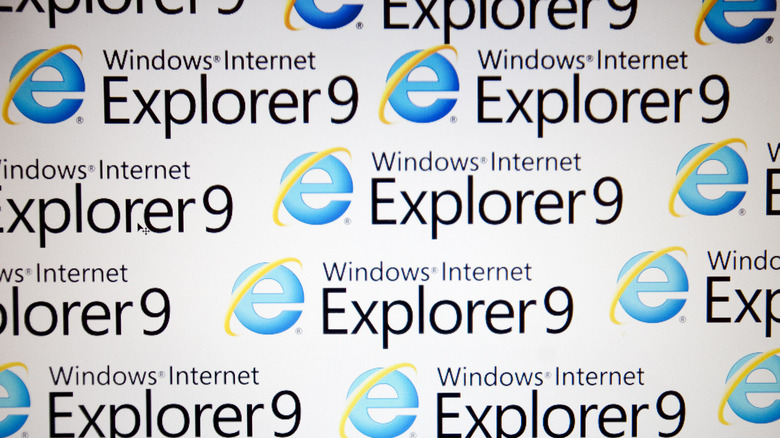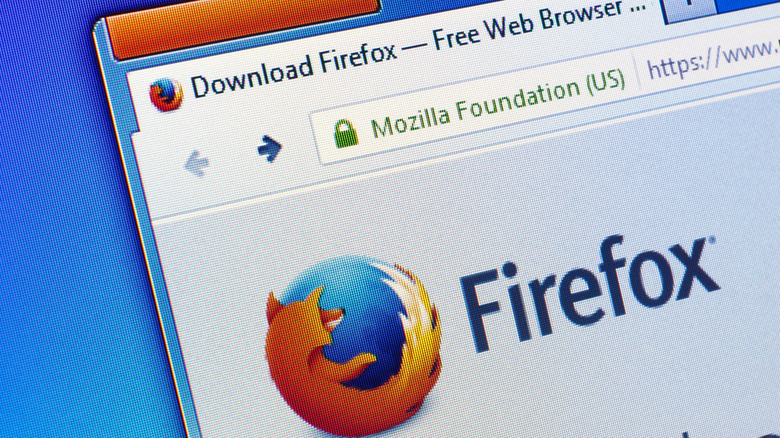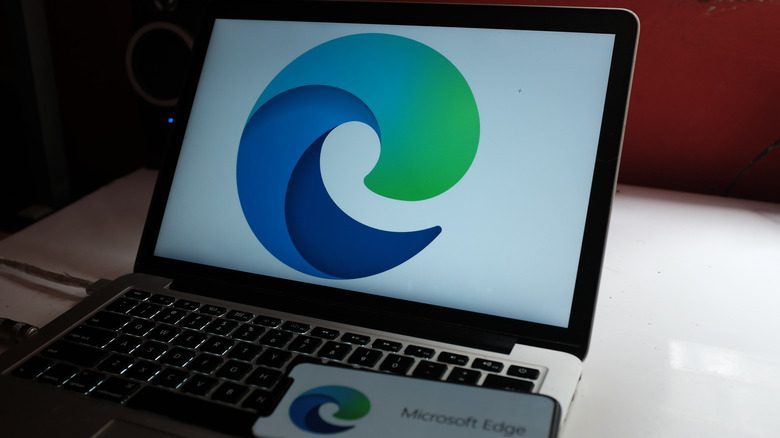RIP Internet Explorer
It's the end of an era. With a hint of sadness and a tinge of nostalgia, today we mark the official retirement of Internet Explorer. First launched on August 16, 1995, Microsoft's go-to web browser lived to be 27 — but it wasn't always an easy life. Internet Explorer, ever the root of many jokes, was once a favorite, but much like the computers it used to run on, it slowly slipped into irrelevancy. As Microsoft bids farewell to IE and cuts all support for the browser, let us take a look at its history, complete with the ups, the downs, and the quiet days leading up to its demise.
If you're of a certain age, you probably remember a time when Microsoft's Internet Explorer was your main, and likely only, browser. We used IE to navigate the early days of the internet, exploring its simple corners with awe in our eyes. In the late '90s and the early 2000s, many users were still stuck with a dial-up connection, and the lucky ones who had broadband could never break past speeds of around 40 Mbps. However, as shown by this news report from CNN back in 2000, dial-up was still dominant at the time — which meant that, regardless of the browser, everything loaded at a snail's pace.
In such an environment, IE was able to thrive. It practically chased the previous king of the hill, Netscape Navigator, right out the door. Microsoft bundled IE together with Windows in such a way that most users turned to Internet Explorer by default, and then, they simply stayed true to it. Until one day, they didn't. What caused the demise of Internet Explorer?
Microsoft's browser was an early pioneer
By now, Internet Explorer is mostly remembered as the ultimate "browser to download other browsers," but Microsoft actually pioneered a whole lot of exciting technologies with IE. The third iteration of Internet Explorer, released in 1997, was the first to introduce Cascading Style Sheets (CSS). Without CSS, we might still be stuck with the barebones HTML sites we might remember from the 90s and the 00s. CSS is responsible for a slew of important things still used in modern web development, ranging from functional tools for modern aesthetics to the website's responsiveness. IE3 also added Java applets and JScript.
Internet Explorer 4 added Dynamic HTML, which when combined with JavaScript allowed web pages to dynamically change. The release of Internet Explorer 5 brought about XMLHttpRequest (XHR), which would eventually give birth to AJAX, ushering in tools that helped form the hidden technology behind all kinds of web apps we're still using to this day.
By the time IE 6 rolled out in 2001, Microsoft controlled the web browser market, but it still continued improving the browser by adding innovations such as auto image resizing, print preview, managing cookies, and other things we still use in modern browsers. Unfortunately, this is when Microsoft seems to have effectively rested on its laurels as it didn't release any major new version of Internet Explorer until 2006.
Internet Explorer won its first battles, but it lost the war
Microsoft's choice to make its own web browser and integrate it into its Windows operating system was a huge hit for the company. Starting in 1995, IE arrived in our systems as the default browser, and apart from the most tech-savvy of users, the majority of people didn't think to stray from it. After all, it was "the internet."
As we move on to the early 2000s, the average user's awareness of web security was nearly non-existent, and it showed. Websites were filled with pop-ups and ads, computers were infected with all manner of viruses, spyware, and malware, and this state of things was widely accepted. Early web users simply didn't have any other experience with which to compare, so the madness that was Web 1.0 was accepted as unavoidable by masses of users.
Although Microsoft made Internet Explorer the go-to by tightly weaving it into Windows, it was never without fault. Internet Explorer opened the window to the internet for many early users, but it's hard to say if they would have still chosen it over Netscape Navigator if not for the fact that IE was right there from the start. Fully uninstalling Internet Explorer was always relatively difficult to do and required jumping through many hoops and applying workarounds entirely too complex for the average user. As such, Microsoft's Internet Explorer dominated the browser market share in the early 2000s.
As reported by Visual Capitalist, at the time of IE's birth, Netscape had a market share of around 95%. By the time the new millennium had started, IE already knocked Netscape down to the ground, capturing up to 75% of users. It eventually reached over 90% and sat comfortably at the peak of its greatness ... until 2004, when Mozilla Firefox came along.
Firefox exposed the flaws in Internet Explorer
With the nostalgia goggles firmly off, it's hard to deny that IE had its fair share of issues. The fact that it was connected to the operating system so tightly, and still had a lot of security flaws, made IE users an easy target for all kinds of hacks. The browser was painfully slow and Microsoft did very little to remedy that, safe in the knowledge that it controlled the web browser market share by a tremendous amount. However, as the internet itself evolved, users slowly grew frustrated with IE's shortcomings.
Due to the many holes in the security provided by IE, it was ridden with all manner of bugs. It often crashed and sometimes failed to display websites properly, even though in theory, everything should have been fine. In this sea of growing user frustration combined with Microsoft's odd indifference, Mozilla Firefox entered the IE-dominated market and proceeded to take it by storm. The first version of Firefox was released on November 9, 2004, and many users were quick to jump ship. Firefox noted an impressive 60 million downloads within nine months of its release, finally giving IE a run for its money.
Although Firefox certainly shook things up, it was Google that added the final nail to the coffin of Internet Explorer's market dominance. With the release of Google Chrome, both Chrome and Firefox eroded IE's market share until it dropped below 50% in 2011. In 2012, IE officially had to give up the crown — it was no longer the world's top browser. That place was taken by Google Chrome, which remains the leader to this day, with a nearly 70% market share as of May 2022.
Microsoft replaced IE with Edge
We're nearing the end of Internet Explorer's story. After Google Chrome wrestled the crown away from IE, its market share dropped and dropped until Microsoft released its successor — Edge. The company learned from the lesson by improving Edge in many ways, making it faster, more secure, and adapted to the needs of modern internet users that are so vastly different from those of the '90s and 2000s. Be that as it may, Edge was never able to replicate the early success of Internet Explorer. It currently sits at a lowly 4% browser market share, behind Google Chrome and Safari. Firefox, surprisingly enough, continues to nip at the heels of its competitors, fighting for third place behind Google and Apple.
The introduction of Microsoft Edge sealed the fate of IE, and in May 2021, Microsoft announced that it would be ending all support for the browser on June 15, 2022. And now, here we are — it's time to move on.
Internet Explorer had a good run. It saw the dawn of the widespread web, the evolution of both hardware and software made to access the internet, and the rapid changes that internet access brought to the world. It had its flaws and its virtues, but ultimately, no one can deny that it was instrumental in shaping the internet that we know and use today. Even though most of us haven't used it in years, it's impossible not to feel a hint of nostalgia as we finally say: "Goodbye, IE."




